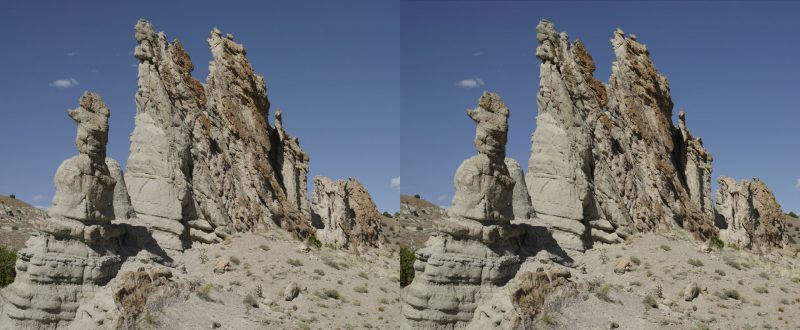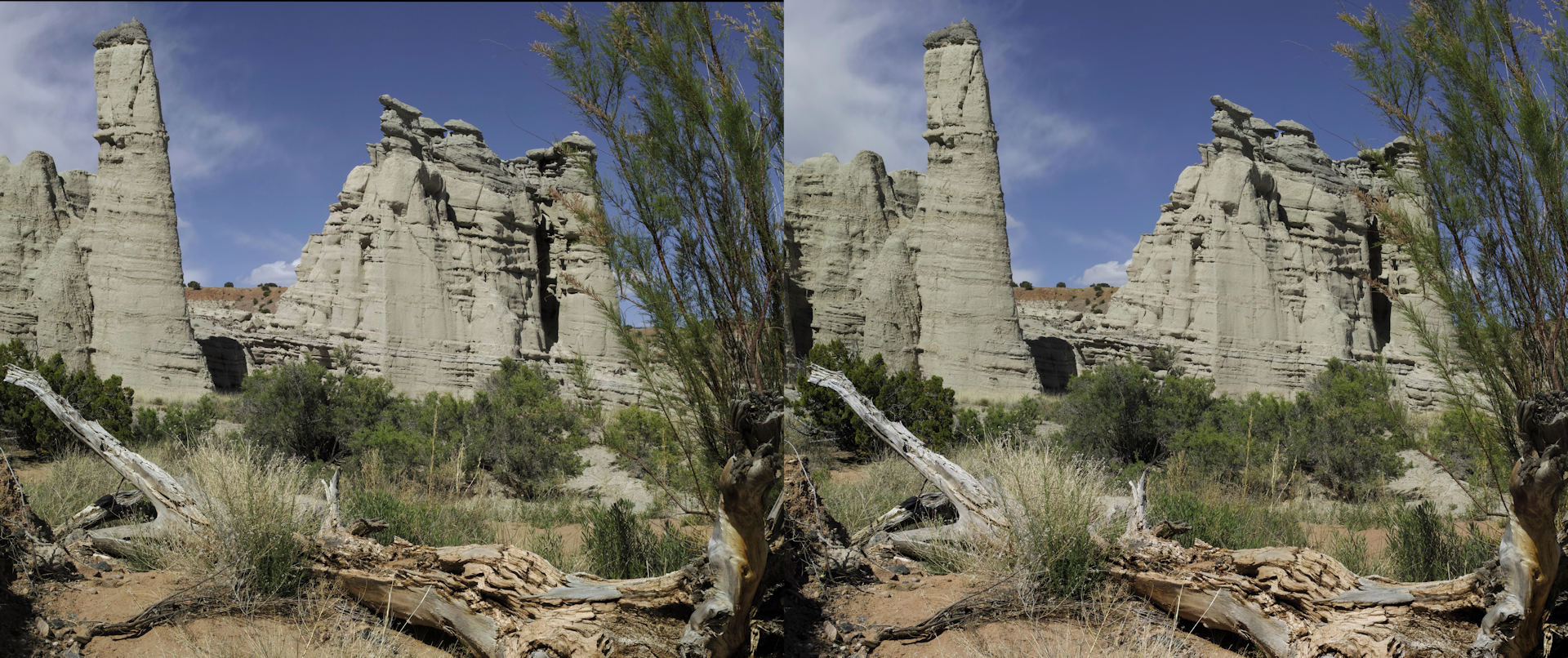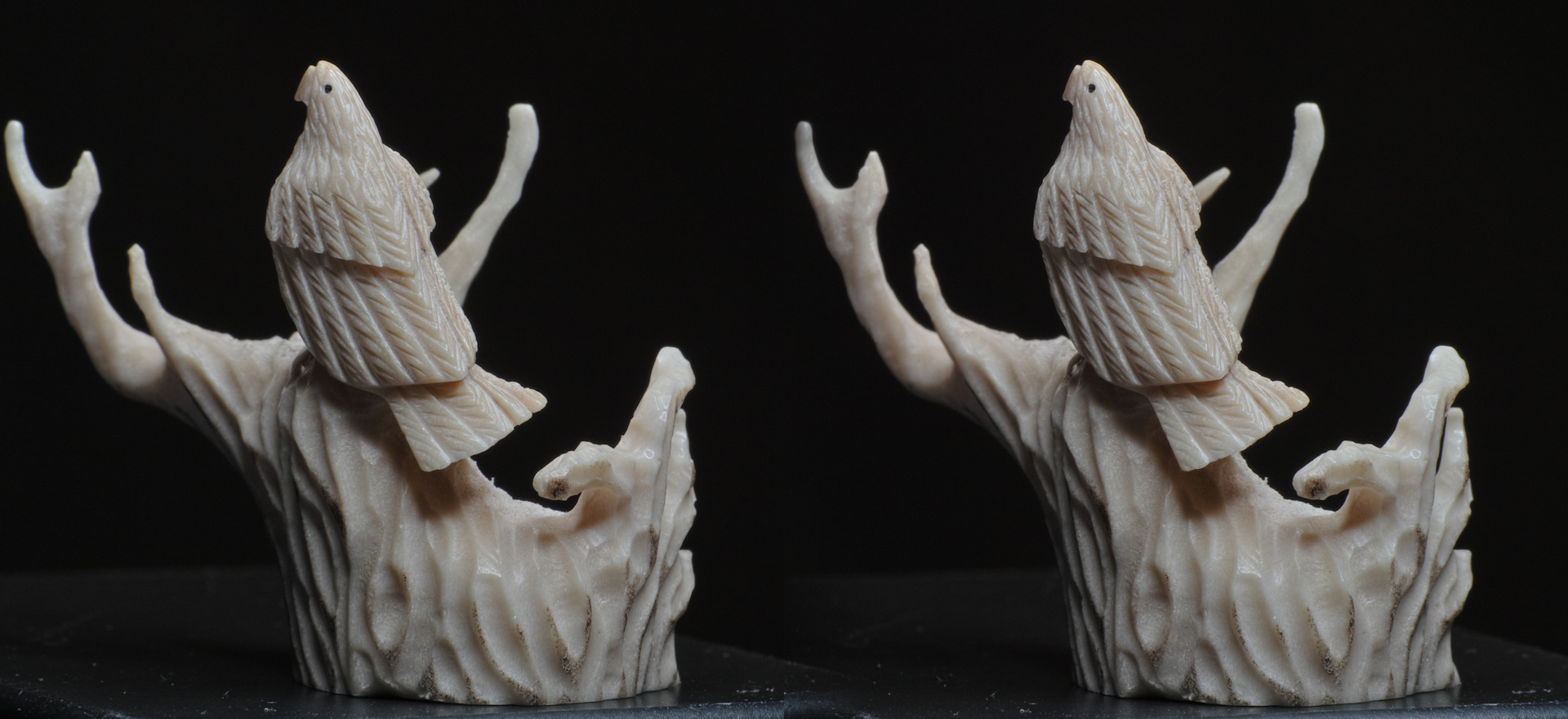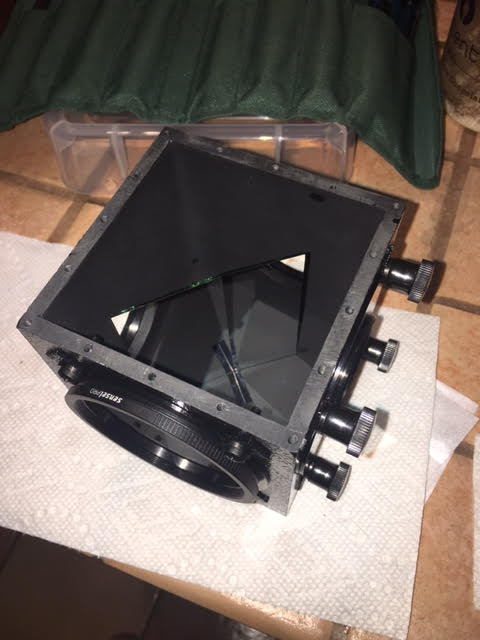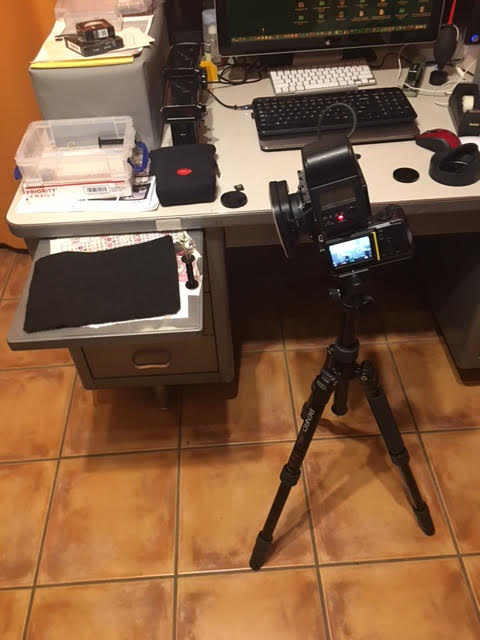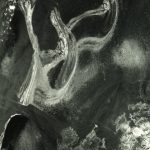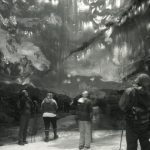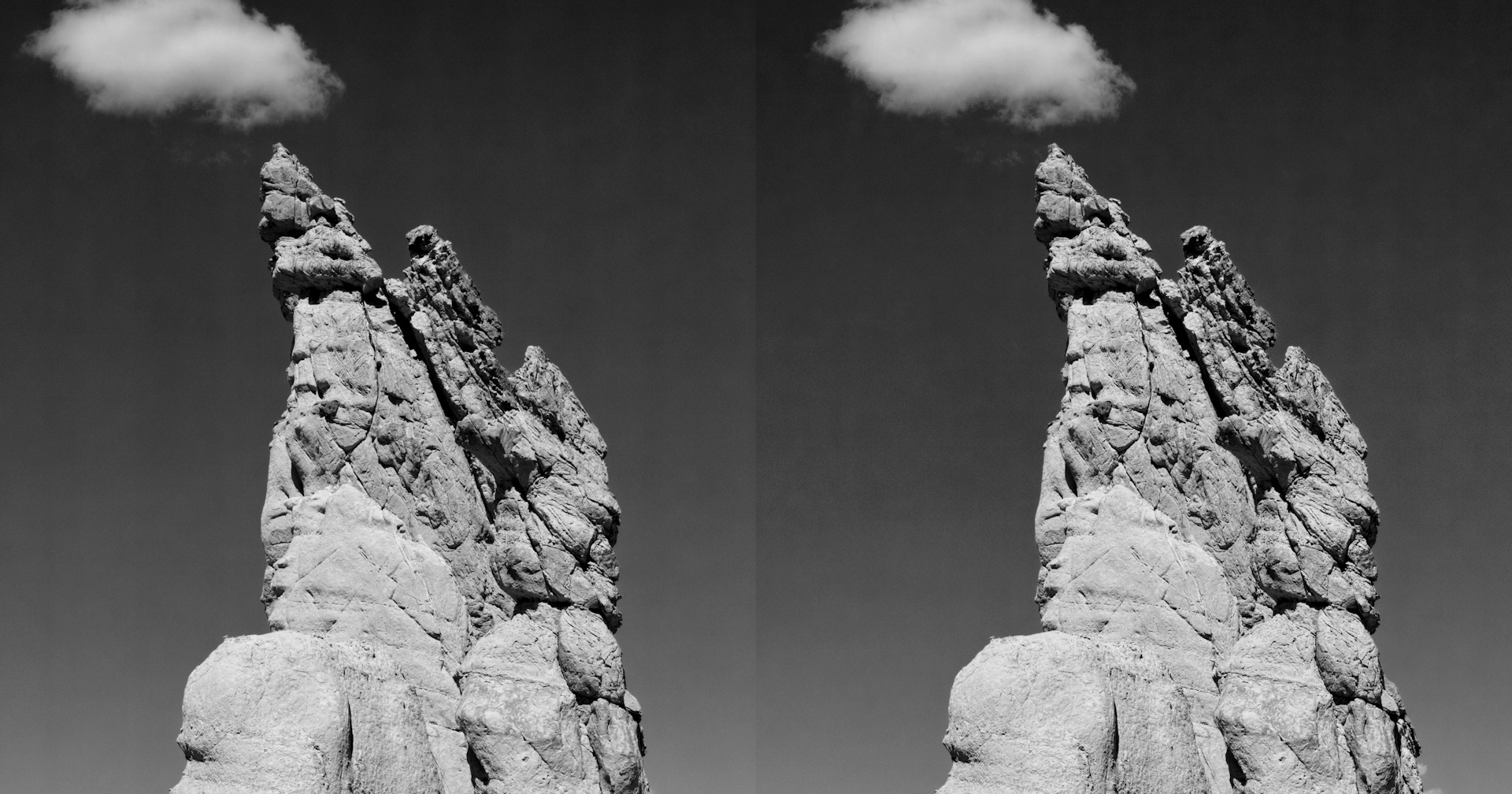
Dragon and Rider, Plaza Blanca
Alternate view of the Dragon Spine formation at Plaza Blanca, about one hour north of Santa Fe New Mexico by car, the last couple of miles is a dirt road. Process used is the same as for the Dragon Spine image (described in more detail there). The process for digital to film I described in my notes for A28 folio entries. This is the red channel only, spreading the histogram to result in maximum range from black to white (some of the streaks are from the JPG compression when I uploaded this image). The 16 bit Sigma Merrill image (which as 12 bits of useful range, padded to 16 bits) was processed in Corel PSP. This seems to introduce some aliasing in dark quarter-tones, next time I’ll use a 16 bit work flow. Most of the PSP workflow is 16 bit, but histogram manipulation seems to sometimes result in gaps in the color scale. This can be seen in the patterns in the sky, which was pushed down to make it dark. I could also try a red filter, but the red layer of the Merrill sensor is pretty good at that color separation. Perhaps a polarizer! Someone showed a film rig in 2012 (the MF SIG) at my first NSA and it had some square gradient filters, I could likely go that route (I think it was Bob Venezia). Close one eye and you could imagine this is a rider and a dragon, with a puff of smoke. In 3D that illusion is less convincing. Still, the figure to the lower right looks like and earnest fellow with a big nose and his muscular arms at his sides.
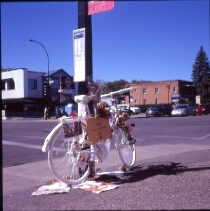
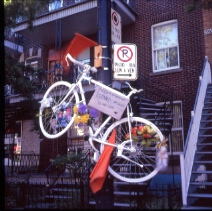
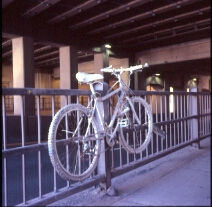
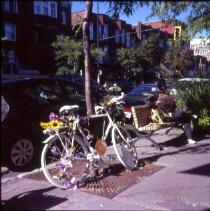
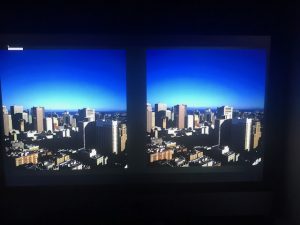
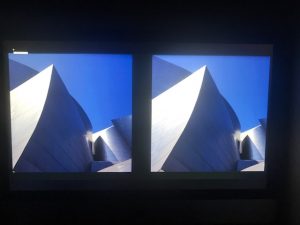
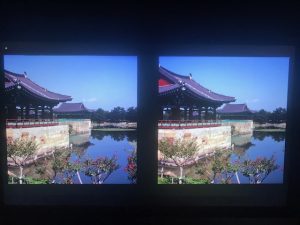
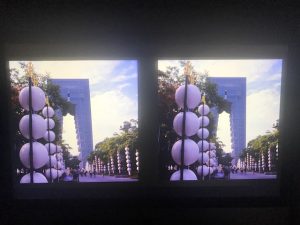
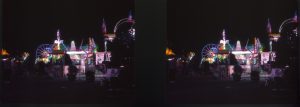 2017 Minnesota State Fair.
2017 Minnesota State Fair.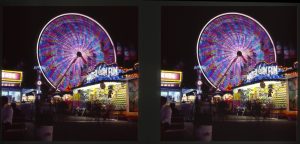 Taken at the 2017 Minnesota State Fair.
Taken at the 2017 Minnesota State Fair.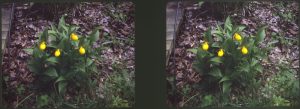
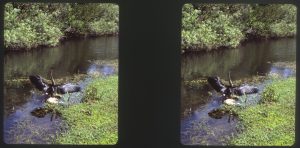 the Shark Valley unit of Everglades National Park, April 2016.
the Shark Valley unit of Everglades National Park, April 2016.